Allen P Ho
age ~76
from Woodinville, WA
- Also known as:
-
- Allen Shuchao Ho
- Allen Shu Ho
- Allen Shuchoa Ho
- Allen O Ho
- Maurice Weintraub
Allen Ho Phones & Addresses
- Woodinville, WA
- San Jose, CA
- Tacoma, WA
- 8101 Thorne Ln, Lakewood, WA 98498 • 2535830736
- Kirkland, WA
- Fremont, CA
- Sunny Isles Beach, FL
- Spokane Valley, WA
- 19318 218Th Pl NE, Woodinville, WA 98077 • 2535830736
Work
-
Position:Private Household Service Occupations
Medicine Doctors

Allen C. Ho
view sourceSpecialties:
Ophthalmology
Work:
Mid Atlantic Retina Associates
4060 Butler Pike STE 200, Plymouth Meeting, PA 19462
8003316634 (phone), 2674201361 (fax)
Mid Atlantic Retina AssociatesMid Atlantic Retina
501 Cooper Lndg Rd, Cherry Hill, NJ 08002
8566672246 (phone), 8566672238 (fax)
Mid Atlantic Retina AssociatesMid Atlantic Retina
5325 Northgate Dr STE 103, Bethlehem, PA 18017
6106917010 (phone), 6106916817 (fax)
Mid Atlantic Retina AssociatesMid Atlantic Retina
727 Welsh Rd STE 206, Huntingdon Valley, PA 19006
8003316634 (phone), 2159479324 (fax)
Mid Atlantic Retina AssociatesMid Atlantic Retina
840 Walnut St STE 1020, Philadelphia, PA 19107
2159283300 (phone), 2158252443 (fax)
Mid Atlantic Retina AssociatesMid Atlantic Retina
125 Medical Campus Dr STE 315, Lansdale, PA 19446
2153616142 (phone), 2153616143 (fax)
Mid Atlantic Retina AssociatesMid Atlantic Retina
1523 Concord Pike STE 101, Wilmington, DE 19803
8003316634 (phone), 3023511088 (fax)
4060 Butler Pike STE 200, Plymouth Meeting, PA 19462
8003316634 (phone), 2674201361 (fax)
Mid Atlantic Retina AssociatesMid Atlantic Retina
501 Cooper Lndg Rd, Cherry Hill, NJ 08002
8566672246 (phone), 8566672238 (fax)
Mid Atlantic Retina AssociatesMid Atlantic Retina
5325 Northgate Dr STE 103, Bethlehem, PA 18017
6106917010 (phone), 6106916817 (fax)
Mid Atlantic Retina AssociatesMid Atlantic Retina
727 Welsh Rd STE 206, Huntingdon Valley, PA 19006
8003316634 (phone), 2159479324 (fax)
Mid Atlantic Retina AssociatesMid Atlantic Retina
840 Walnut St STE 1020, Philadelphia, PA 19107
2159283300 (phone), 2158252443 (fax)
Mid Atlantic Retina AssociatesMid Atlantic Retina
125 Medical Campus Dr STE 315, Lansdale, PA 19446
2153616142 (phone), 2153616143 (fax)
Mid Atlantic Retina AssociatesMid Atlantic Retina
1523 Concord Pike STE 101, Wilmington, DE 19803
8003316634 (phone), 3023511088 (fax)
Education:
Medical School
Columbia University College of Physicians and Surgeons
Graduated: 1988
Columbia University College of Physicians and Surgeons
Graduated: 1988
Procedures:
Destruction of Lesion of Retina and Choroid
Retinal Detachment Repair
Lens and Cataract Procedures
Ophthalmological Exam
Retinal Detachment Repair
Lens and Cataract Procedures
Ophthalmological Exam
Conditions:
Diabetic Retinopathy
Macular Degeneration
Retinal Detachments
Acute Conjunctivitis
Cataract
Macular Degeneration
Retinal Detachments
Acute Conjunctivitis
Cataract
Languages:
English
Description:
Dr. Ho graduated from the Columbia University College of Physicians and Surgeons in 1988. He works in Plymouth Meeting, PA and 6 other locations and specializes in Ophthalmology. Dr. Ho is affiliated with Chestnut Hill Hospital, Thomas Jefferson University Hospital, Wilkes Barre General Hospital and Williamsport Regional Medical Center.

Allen Szu-Hao Ho, Palo Alto CA
view sourceSpecialties:
Otolaryngology
Work:
Stanford University
801 Welch Rd, Palo Alto, CA 94304
801 Welch Rd, Palo Alto, CA 94304
Education:
University of California at Los Angeles (2006)

Allen Szu-Hao Ho, Palo Alto CA
view sourceSpecialties:
Ear, Nose & Throat Doctor
Address:
801 Welch Rd, Palo Alto, CA 94304
Us Patents
-
Method Of Forming Wide, Deep Dielectric Filled Isolation Trenches In The Surface Of A Silicon Semiconductor Substrate
view source -
US Patent:43859755, May 31, 1983
-
Filed:Dec 30, 1981
-
Appl. No.:6/336109
-
Inventors:Allen P. Ho - Sunnyvale CA
Cheng T. Horng - San Jose CA
Bernard M. Kemlage - Kingston NY -
Assignee:International Business Machines Corp. - Armonk NY
-
International Classification:C23C 1500
-
US Classification:204192E
-
Abstract:A method of forming a wide deep dielectric filled isolation trench in the surface of a silicon semiconductor substrate by forming a wide plug of chemical vapor deposited silicon dioxide in the trench, filling the remaining unfilled trench portions by chemical vapor depositing a layer of silicon dioxide over the substrate and etching back this layer. The method produces chemically pure, planar wide deep dielectric filled isolation trenches and may also be used to simultaneously produce narrow deep dielectric filled isolation trenches.
-
Crossing Transfers For Maximizing The Effective Bandwidth In A Dual-Bus Architecture
view source -
US Patent:54148200, May 9, 1995
-
Filed:Mar 21, 1994
-
Appl. No.:8/215232
-
Inventors:Harold L. McFarland - San Jose CA
Allen P. Ho - Fremont CA -
Assignee:NexGen, Inc. - Milpitas CA
-
International Classification:G06F 1336
G06F 1340 -
US Classification:395325
-
Abstract:A dual-bus architecture that includes a high-speed system bus, called the NexBus (20), and a slower peripheral bus, called the alternate bus or AB (25). The NexBus and AB are coupled by control logic (45) which includes an arbiter (50) and an alternate bus interface (ABI) (60). The ABI is treated as a master for both the NexBus and the AB. While it would be possible to have the adapter always request the AB (which also requires the NexBus), that would slow down NexBus operations to the bandwidth of the AB. This problem is avoided by providing two request lines for each adapter, -NREQ (NexBus only) and -AREQ (both buses), having the adapter normally assert -NREQ first. However, if the addressed device is on the AB, the ABI automatically detects this fact and attempts to do a crossing transfer to the AB, even though the request was for the NexBus only. If the ABI is unable to do the crossing transfer because the AB was busy, the ABI automatically causes the NexBus adapter to retry the request using the -AREQ line. Thus the slower AB is only accessed when actually necessary.
-
Bus Arbitration In A Dual-Bus Architecture Where One Bus Has Relatively High Latency
view source -
US Patent:53697480, Nov 29, 1994
-
Filed:Aug 23, 1991
-
Appl. No.:7/748768
-
Inventors:Harold L. McFarland - San Jose CA
Allen P. Ho - Fremont CA -
Assignee:Nexgen Microsystems - Milpitas CA
-
International Classification:G06F 1336
-
US Classification:395325
-
Abstract:A dual-bus architecture that includes a high-seed system bus, called the NexBus (20), and a slower peripheral bus, called the alternate bus or AB (25). The NexBus and AB are coupled by control logic (45) which includes an arbiter (50) and an alternate bus interface (ABI) (60). The ABI is treated as a master for both the NexBus and the AB. While it would be possible to have the adapter always request the AB (which also requires the NexBus), that would slow down NexBus operations to the bandwidth of the AB. This problem is avoided by providing two request lines for each adapter, -NREQ (NexBus only) and -AREQ (both buses), having the adapter normally assert -NREQ first. However, if the addressed device is on the AB, the ABI automatically detects this fact and attempts to do a crossing transfer to the AB, even though the request was for the NexBus only. If the ABI is unable to do the crossing transfer because the AB was busy, the ABI automatically causes the NexBus adapter to retry the request using the -AREQ line. Thus the slower AB is only accessed when actually necessary.
-
Crossing Transfers For Maximizing The Effective Bandwidth In A Dual-Bus Architecture
view source -
US Patent:56279760, May 6, 1997
-
Filed:Mar 20, 1995
-
Appl. No.:8/407309
-
Inventors:Harold L. McFarland - San Jose CA
Allen P. Ho - Fremont CA -
Assignee:Advanced Micro Devices, Inc. - Sunnyvale CA
-
International Classification:G06F 1300
-
US Classification:395308
-
Abstract:A dual-bus architecture that includes a high-speed system bus, called the NexBus (20), and a slower peripheral bus, called the alternate bus or AB (25). The NexBus and AB are coupled by control logic (45) which includes an arbiter (50) and an alternate bus interface (ABI) (60). The ABI is treated as a master for both the NexBus and the AB. While it would be possible to have the adapter always request the AB (which also requires the NexBus), that would slow down NexBus operations to the bandwidth of the AB. This problem is avoided by providing two request lines for each adapter, -NREQ (NexBus only) and -AREQ (both buses), having the adapter normally assert -NREQ first. However, if the addressed device is on the AB, the ABI automatically detects this fact and attempts to do a crossing transfer to the AB, even though the request was for the NexBus only. If the ABI is unable to do the crossing transfer because the AB was busy, the ABI automatically causes the NexBus adapter to retry, the request using the -AREQ line. Thus the slower AB is only accessed when actually necessary.
-
Therapeutic Agent Delivery Device With Convergent Lumen
view source -
US Patent:20150351958, Dec 10, 2015
-
Filed:Jun 1, 2015
-
Appl. No.:14/726786
-
Inventors:- Cincinnati OH, US
- Raritan NJ, US
Daniel J. Abbott - Maple Valley WA, US
Michael F. Keane - Downingtown PA, US
Allen C. Ho - Lower Gwynedd PA, US
Mark C. Tsai - Chalfont PA, US
Isaac J. Khan - Bridgewater NJ, US -
International Classification:A61F 9/00
A61M 25/06 -
Abstract:An apparatus has a first fluid conduit, a second fluid conduit, a connector member, an first tubular member, a second tubular member, and an inner cannula. The connector member has first and second passageways in which the first and second fluid conduits are positioned, respectively. A portion of the second tubular member is positioned within the lumen of the first tubular member. A proximal portion of the inner cannula is fixedly secured within the lumen of the first tubular member. The inner cannula lumen is in fluid communication with the first and second fluid conduits via the lumen of the first tubular member and the lumen of the second tubular member. The inner cannula may be inserted into the subretinal space of a human eye to deliver a leading bleb of fluid and then deliver a therapeutic agent, without having to withdraw the inner cannula from the subretinal space between the acts of delivering the leading bleb delivering the therapeutic agent.
Name / Title
Company / Classification
Phones & Addresses
President
Allen P Ho
Computer Software Publishers & Developers. Services - General. Business Services - General. Computers Software & Services
Computer Software Publishers & Developers. Services - General. Business Services - General. Computers Software & Services
19318 218Th Pl NE, Woodinville, WA 98077
4258449009
4258449009
Owner
Company's Coming Snack Bars Ltd. - Mayfair
Doughnuts
Doughnuts
#125 - 3147 Douglas Street, Victoria, BC V8Z 6E3
2503837755
2503837755
Owner
Company's Coming Snack Bars Ltd. - Mayfair
Doughnuts
Doughnuts
2503837755
Co-Owner
Printime
Lithographic Commercial Printing
Lithographic Commercial Printing
110 Glenn Way, San Carlos, CA 94070
6505081727
6505081727
Medical Doctor
Stanford Otolaryngology
Medical Doctor's Office
Medical Doctor's Office
801 Welch Rd, Palo Alto, CA 94304
President, Principal
ALLIANCE FOR PERSERVING THE TRUTH OF SINO-JAPANESE WAR
Services-Misc
Services-Misc
PO Box 2066, Cupertino, CA 95015
12785 Ln Cresta Dr, Los Altos, CA 94022
12785 Ln Cresta Dr, Los Altos, CA 94022
Managing
AP Staging Company LLC
Home Staging
Home Staging
1325 Howard Ave, Burlingame, CA 94010
President, Secretary
STRATAGEN SYSTEMS, INC
Prepackaged Service · Software Publishers
Prepackaged Service · Software Publishers
12413 Willows Rd NE STE 210, Kirkland, WA 98034
12413 Willows Rd Ne 210, Kirkland, WA 98034
4040 Lk Washington Blvd NE STE 201, Kirkland, WA 98033
4258218454, 8889216695, 4258236959
12413 Willows Rd Ne 210, Kirkland, WA 98034
4040 Lk Washington Blvd NE STE 201, Kirkland, WA 98033
4258218454, 8889216695, 4258236959
Resumes

Head & Neck Surgery Fellow
view sourceLocation:
United States
Industry:
Hospital & Health Care
Work:
National Institutes of Health - Bethesda, MD Jun 2003 - Jul 2004
HHMI-NIH Research Fellow
JP Morgan Jul 2000 - Jul 2001
Investment Banking Analyst
Chicago Board of Trade Jun 1997 - Sep 1997
Bond Trader Assistant
HHMI-NIH Research Fellow
JP Morgan Jul 2000 - Jul 2001
Investment Banking Analyst
Chicago Board of Trade Jun 1997 - Sep 1997
Bond Trader Assistant
Education:
Memorial Sloan-Kettering Cancer Center 2011 - 2013
Fellowship, Head and Neck Surgery Stanford University School of Medicine 2006 - 2011
UCLA School of Medicine 2001 - 2006
MD, Medicine Harvard University 1996 - 2000
BA, Neurobiology
Fellowship, Head and Neck Surgery Stanford University School of Medicine 2006 - 2011
UCLA School of Medicine 2001 - 2006
MD, Medicine Harvard University 1996 - 2000
BA, Neurobiology
Skills:
Clinical Research
Cancer
Genetics
Healthcare
Hospitals
Medical Devices
Data Analysis
Translational Research
Cancer
Genetics
Healthcare
Hospitals
Medical Devices
Data Analysis
Translational Research
Honor & Awards:
AAO-HNS Resident Leadership Grant, 2011
Triological Society Research Grant (x2), 2009-2011
HHMI Research Travel Grant (x3), 2005
Nathan Lazar Medical Scholarship, 2004
Chinese American Physician's Society Scholarship, 2004
Chinese American Medical Society Scholarship, 2004
California Medical Assoc. Leadership Academy Scholarship, 2004
Academy of Achievement Honoree, 2004
Harvard University: magna cum laude w/Highest Honors in Field, 2000
National Merit Scholarship, 1996-2000
Harvard College Scholarship, 1996-2000
Harvard College Research Program Grant, 1999
Harvard President Public Service Fund Grant, 1999
Harvard Undergraduate Council Grant, 1999
John Harvard Scholarship, 1996-1997
Languages:
Chinese
Awards:
AHNS/AAO-HNSF Young Investigator Award
Mutational characterization of adenoid cystic carcinoma. Role: Principal Investigator.
NIH T32 Ruth Kirschstein National Research Service Award
Mutational landscape of salivary and thyroid malignancies. Role: Grantee.
HHMI Continuing Support Scholarship
BAG family in transcriptional activation of head and neck malignancies. Role: Principal Investigator.
The California Endowment Foundation Project Grant
Minority Health Conference: Bridging Cultures and Enhancing Care. Role: Principal Author.
UCLA Office of Academic Outreach and Enrichment Project Grant
Minority Health Conference: Bridging Cultures and Enhancing Care. Role: Principal Author.
Ronald McDonald House Charities Grant
Harvard Chinatown Committee Computing Facility. Role: Principal Author.
Mutational characterization of adenoid cystic carcinoma. Role: Principal Investigator.
NIH T32 Ruth Kirschstein National Research Service Award
Mutational landscape of salivary and thyroid malignancies. Role: Grantee.
HHMI Continuing Support Scholarship
BAG family in transcriptional activation of head and neck malignancies. Role: Principal Investigator.
The California Endowment Foundation Project Grant
Minority Health Conference: Bridging Cultures and Enhancing Care. Role: Principal Author.
UCLA Office of Academic Outreach and Enrichment Project Grant
Minority Health Conference: Bridging Cultures and Enhancing Care. Role: Principal Author.
Ronald McDonald House Charities Grant
Harvard Chinatown Committee Computing Facility. Role: Principal Author.
Certifications:
Board Certification, Otolaryngology-Head and Neck Surgery, American Board of Otolaryngology
New York Medical License, State of New York
California Medical License, State of California
New York Medical License, State of New York
California Medical License, State of California

Staff Software Engineer - Android
view sourceLocation:
2685 Glen Elk Ct, San Jose, CA 95148
Industry:
Computer Software
Work:
Carrot
Staff Software Engineer - Android
Carrot Inc.
Senior Android Engineer
Jotter Oct 1, 2016 - May 2017
Senior Android Developer
Snapfish Mar 2015 - Oct 2016
Android Developer
Ibm Jul 2013 - Mar 2015
Technical Support Engineer
Staff Software Engineer - Android
Carrot Inc.
Senior Android Engineer
Jotter Oct 1, 2016 - May 2017
Senior Android Developer
Snapfish Mar 2015 - Oct 2016
Android Developer
Ibm Jul 2013 - Mar 2015
Technical Support Engineer
Education:
San Jose State University 2012 - 2012
Bachelors, Computer Science San Jose State University 2012
Bachelors, Bachelor of Arts Evergreen Valley High School
Bachelors, Computer Science San Jose State University 2012
Bachelors, Bachelor of Arts Evergreen Valley High School
Skills:
Java
Html
Sql
Javascript
Mysql
Microsoft Office
C
Linux
Vba
Software Documentation
Software Development
C#
Visual Basic
Xml
Php
.Net
Test Driven Development
Pair Programming
Html
Sql
Javascript
Mysql
Microsoft Office
C
Linux
Vba
Software Documentation
Software Development
C#
Visual Basic
Xml
Php
.Net
Test Driven Development
Pair Programming
Interests:
San Jose State University
Languages:
English
Mandarin
Mandarin

Allen Ho
view source
Allen Ho
view sourceLicense Records
Allen W Ho
License #:
03760 - Expired
Issued Date:
Sep 10, 1996
Expiration Date:
Jun 30, 1998
Type:
Individual
Allen W Ho
License #:
03760 - Expired
Issued Date:
Sep 10, 1996
Expiration Date:
Jun 30, 1998
Type:
Individual
Allen H Ho
License #:
MT021782T - Expired
Category:
Medicine
Type:
Graduate Medical Trainee
Isbn (Books And Publications)

Retina: Color Atlas & Synopsis of Clinical Ophthalmology
view sourceAuthor
Allen C. Ho
ISBN #
0071375961

Mark Allen Ho
view source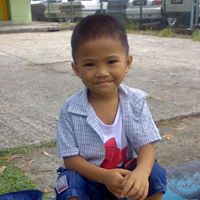
Allen Ho
view source
Allen Ho
view source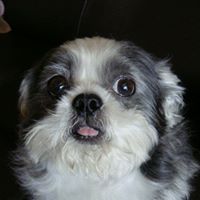
Allen Ho Feng
view source
Allen Ho
view source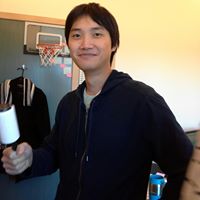
Allen Ho
view source
Allen Ho
view source
Allen Ho
view sourceYoutube
Plaxo

allen ho
view sourceprintime
Classmates

Allen Ho
view sourceSchools:
Samuel Lutheran School Marshall MN 1987-1995, Shattuck-St. Mary's School Faribault MN 1995-1999
Community:
Jeff Collins, Kristy Nerud, Lynn Gilbert, Lori Valeri, Barbara Cross, Hal Newell

Allen Ho
view sourceSchools:
Calimesa Elementary School Yucaipa CA 1991-1995

Allen Ho
view sourceSchools:
Anson S. Taylor Public School Scarborough Morocco 1989-1993, Henry Kelsey School Scarborough Morocco 1993-1995
Community:
Rachel Midlane, Carman Greene

Calimesa Elementary Schoo...
view sourceGraduates:
Traci Harriman (1976-1982),
Allen Ho (1991-1995),
Janeen Decker (1976-1980),
Marianne Juler (1963-1967)
Allen Ho (1991-1995),
Janeen Decker (1976-1980),
Marianne Juler (1963-1967)

Shattuck-St. Mary's Schoo...
view sourceGraduates:
Allen Ho (1995-1999),
Mike Gordon (1957-1961),
Clark Mcpherson (1994-1998),
Frank Novachek (1946-1950)
Mike Gordon (1957-1961),
Clark Mcpherson (1994-1998),
Frank Novachek (1946-1950)

Henry Kelsey School, Scar...
view sourceGraduates:
Colin Shields (1990-1992),
Denise Gibbons (1974-1975),
Paul Went (1984-1986),
Allen Ho (1993-1995)
Denise Gibbons (1974-1975),
Paul Went (1984-1986),
Allen Ho (1993-1995)

Ryerson University, Toron...
view sourceGraduates:
Alan Ho (1992-1997),
Joe Smithe (1992-1996),
Heather Dickson (1996-2000),
Janet Azzopardi (1991-1995),
Kenneth Goodings (1968-1971),
John Galeazza (1998-2005)
Joe Smithe (1992-1996),
Heather Dickson (1996-2000),
Janet Azzopardi (1991-1995),
Kenneth Goodings (1968-1971),
John Galeazza (1998-2005)
Myspace
Flickr
Googleplus
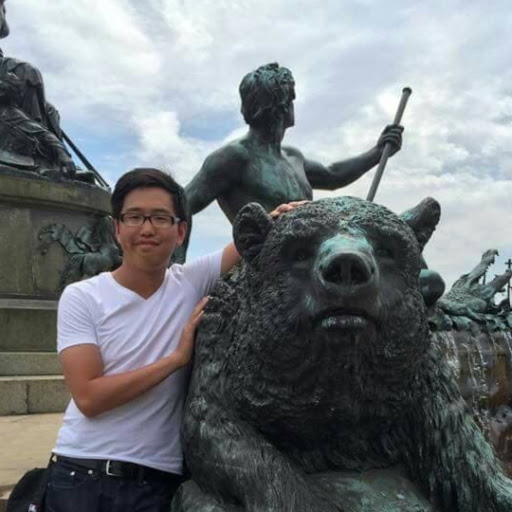
Allen Ho
Work:
Law Offices of Chan Yong Jeong - Intern (2011)
Education:
University of California, Berkeley - English
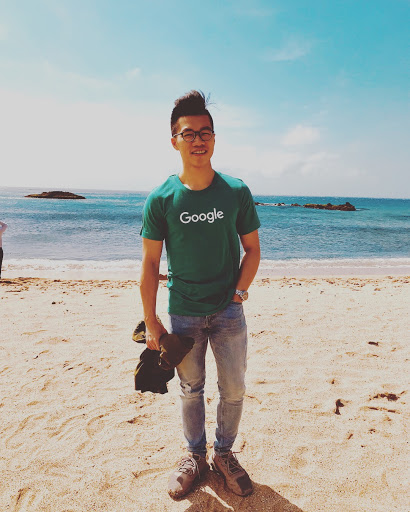
Allen Ho
About:
Cherishing every single customer we have. Because the good service is the consumer deserves. But not the only things they need. And so we'll figure out how to have good relationships with them. Be...
Tagline:
A whole new world
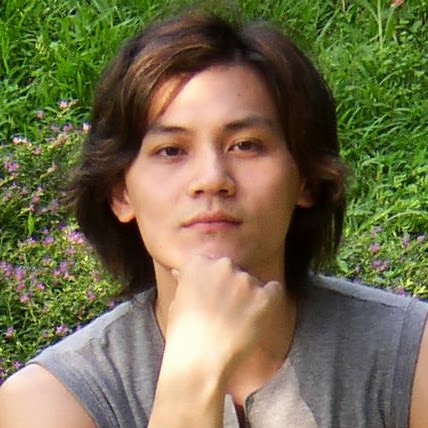
Allen Ho

Allen Ho
Education:
QSI

Allen Ho

Allen Ho

Allen Ho
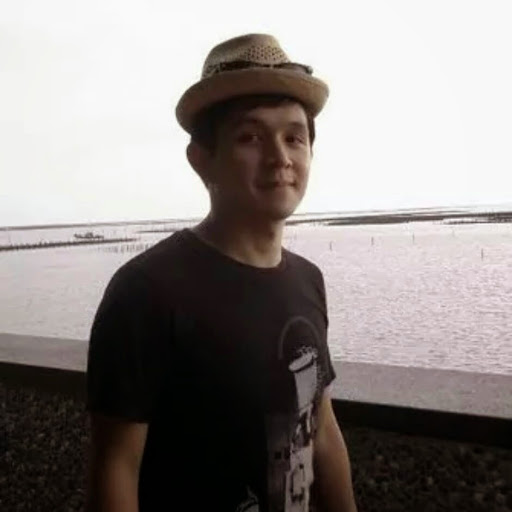
Allen Ho
Get Report for Allen P Ho from Woodinville, WA, age ~76















